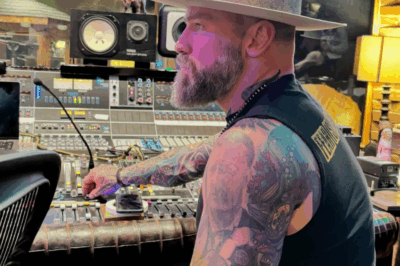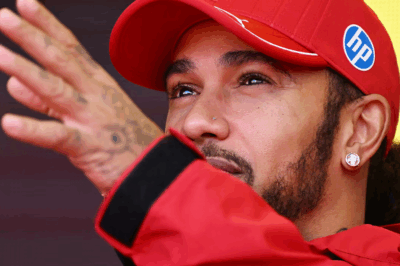For many years, Elon Musk has talked many times about the potential of Dojo – the AI supercomputer that was expected to become the foundation for Tesla’s artificial intelligence ambitions.
According to TechCruch, Dojo is so important that in July 2024, Musk affirmed that Tesla’s AI team would “double down” on the project ahead of the robotaxi launch event in October.
However, after six years of high expectations, Tesla decided to shut down Dojo and disband the development team in August 2025. The decision came just weeks after Tesla expected Dojo 2 – a second-generation supercluster powered by its own D2 chip – to reach scale in 2026. The tech billionaire suddenly changed his mind, calling the project an “evolutionary dead end.”

Elon Musk announced to stop developing Dojo for many reasons
Dojo was originally pitched as a tool to help Tesla move toward fully autonomous driving, humanoid robots, semiconductor autonomy, and other goals. But now it feels more like a never-ending project than a technological breakthrough, leading many analysts and investors to believe that Tesla is not just a car company but also an AI company.
What is Dojo?
Dojo is a supercomputer developed by Tesla, designed to train for its “Full Self-Driving” (FSD) system. The development of Dojo is tied to the ambition to bring FSD and robotaxi to market.
FSD is already deployed in hundreds of thousands of Tesla vehicles, capable of performing some tasks autonomously but still requiring the driver’s attention. The technology also underpins a limited robotaxi service Tesla launched in Austin in June 2025 using Model Y vehicles.
Although Dojo was once expected to be a major contributor, Tesla has rarely mentioned it in its controversial self-driving successes.
Since August 2024, the company has been promoting a new supercomputer called Cortex , built at its Austin headquarters, to “solve real-world AI” with massive video storage for FSD and the Optimus robot.
In its Q4 2024 shareholder report, Tesla updated Cortex but did not mention Dojo at all. It is still unclear whether the discontinuation of Dojo will affect Cortex.
Why does Tesla need Dojo?
Elon Musk has always maintained that Tesla is not just an electric car company or an energy solutions provider, but also an AI company. Tesla pursues a different approach: instead of combining lidar (Light Detection And Ranging – a technology that uses lasers to measure distances and create 3D maps of the surrounding environment), radar and detailed maps, the company believes that simply collecting image data by cameras, combined with powerful neural networks, can replicate the ability to observe and react like humans.
Dojo was developed to train this AI software on massive amounts of data collected from Tesla vehicles around the world. The idea is that the more data, the closer Tesla gets to its goal of full self-driving.
However, experts warn that “cramming” more data does not guarantee a better model, because of increased computational costs and the possibility of lacking truly useful data.
Because of this huge amount of data and processing requirements, Tesla needed a specialized supercomputer. Dojo was born with the core of Tesla’s own D1 chip, optimized for AI tasks. The company hopes this system will outperform the Nvidia GPU-based solution, which is both expensive and creates dependency.

Elon Musk has always maintained that Tesla is more than just an electric car company or an energy solutions provider.
Mixed reactions when Dojo was “terminated”
The decision to close Dojo has been met with mixed reactions, with some seeing it as further evidence of Elon Musk’s tendency to make promises he can’t deliver, amid falling electric vehicle sales and a lackluster robotaxi plan.
On the contrary, some people consider this move not necessarily a failure, but a strategic move to move away from high-risk hardware development to cooperate with chip partners.
Dojo was officially disbanded in mid-August 2025. Project leader Peter Bannon also left Tesla, along with about 20 other employees, to found the startup DensityAI in the field of AI chips and infrastructure.
The loss of key personnel, analysts say, is a major blow to any internal technology project, especially highly specialized ones.
Just weeks earlier, Tesla had signed a $16.5 billion deal with Samsung to supply its next-generation AI6 chips, which it hopes will extend from running FSD and Optimus robots to training high-performance AI in data centers.
“Once it became clear that all directions were converging on AI6, I was forced to shut down Dojo and make difficult personnel decisions, as Dojo 2 was now an evolutionary dead end,” Musk posted on X. “Dojo 3 could exist as multiple AI6 SoCs (systems-on-a-chip) on a single board,” he said.
News
Cody Johnson and Carrie Underwood are nominated for an MTV Video Music Award, for their “I’m Gonna Love You” duet.
Cody Johnson Speaks Out About His Surprising VMA Nomination For His ‘I’m Gonna Love You’ Duet With Carrie Underwood Cody…
Jason Aldean repeatedly refused to cooperate with Kane Brown just because of… differences!
Jason Aldean Keeps Turning Down a Kane Brown Collaboration For One Reason Jason Aldean has yet to do a collaboration…
Zac Brown put his own money where his mouth is to pay for a residency gig at the Las Vegas Sphere.
Zac Brown Reportedly Spending “$6 To $8 Million” Of His Own Money To Make His Las Vegas Sphere Residency Happen…
HARDY’s Wife Caleigh Had Her Entire Bachelorette Party Dress Up Like Her Future Husband – And Even Fooled One Of His Friends
Why so many HARDYs? The country music superstar’s wife just successfully ‘replicated’ her future husband and she did it. @caleighryan23…
Lewis Hamilton spearheads Ferrari one-two as Lando Norris struggles at Monza
Has Ferrari turned the engines up to grab some headlines? Maybe! Lewis Hamilton injected life into his difficult maiden campaign…
Harry Styles Expands Lifestyle Brand Into $16M Global Empire, Diversifying Beyond Music
Harry Styles, 31, has grown his lifestyle brand Pleasing into a global enterprise worth more than $16 million. His company…
End of content
No more pages to load












